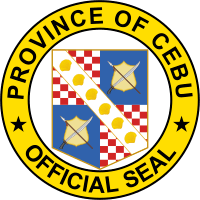Cebu
Cebu (/seɪˈbuː/;[5][6] Cebuano: Sugbu) is a province of the Philippines located in the Central Visayas (Region VII) region, and consists of a main island and 167 surrounding islands and islets. Its capital is Cebu City, the oldest city and first capital of the Philippines, which is politically independent from the provincial government. The Cebu Metropolitan Area is formed by seven neighboring cities (Carcar City, Cebu City, Danao City, Lapu-Lapu City, Mandaue City, Naga City and Talisay City) and eight other local government units. Mactan–Cebu International Airport, located on Mactan Island, is the second busiest airport in the Philippines.
Cebu is one of the most developed provinces in the Philippines with Metro Cebu being the second largest metropolitan area in the Philippines (after Metro Manila) and Cebu City as the main center of commerce, trade, education and industry in the Visayas. In a decade it has transformed into a global hub for shipping, furniture-making, tourism, business processing services, and heavy industry.
History
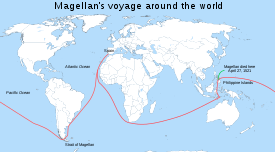
The name "Cebu" comes from the old Cebuano word sibu or sibo ("trade"), a shortened form of sinibuayng hingpit ("the place for trading"). It was originally applied to the harbors of the town of Sugbu, the ancient name for Cebu City.[7] Alternate renditions of the name by traders between the 13th to 16th centuries include Sebu, Sibuy, Zubu, or Zebu, among others.[8] Sugbu, in turn, is derived from the Old Cebuano term for "scorched earth" or "great fire".[7][9]
The Rajahnate of Cebu was a native kingdom which existed in Cebu prior to the arrival of the Spaniards. It was founded by Sri Lumay otherwise known as Rajamuda Lumaya, a half-Malay, half-Tamil prince of the Chola dynasty who invaded Sumatra in Indonesia. He was sent by the Maharajah to establish a base for expeditionary forces to subdue the local kingdoms, but he rebelled and established his own independent Rajahnate instead.[10]
The arrival of Portuguese explorer Ferdinand Magellan in 1521 began a period of Spanish exploration and colonization.[11][12]
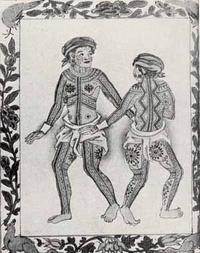
Losing the favour of King Manuel I of Portugal for his plan of reaching the Spice Islands by sailing west from Europe, Magellan offered his services to king Charles I of Spain (Charles V, Holy Roman Emperor). On 20 September 1519, Magellan led five ships with a total complement of 250 people from the Spanish fort of Sanlúcar de Barrameda en route to southeast Asia via the Americas and Pacific Ocean. They reached the Philippines on 16 March 1521. Rajah Kolambu the king of Mazaua told them to sail for Cebu, where they could trade and obtain provisions.
Arriving in Cebu City, Magellan, with Enrique of Malacca as translator, befriended Rajah Humabon the Rajah or King of Cebu, and persuaded the natives to ally themselves with Charles I of Spain. Humabon and his wife were given Christian names and baptized as Carlos and Juana. The Santo Niño was presented to the native queen of Cebu, as a symbol of peace and friendship between the Spaniards and the Cebuanos. On 14 April Magellan erected a large wooden cross on the shores of Cebu. Afterwards, about 700 islanders were baptized.
Magellan soon heard of datu Lapu-Lapu, a native king in nearby Mactan Island, a rival of the Rajahs of Cebu. It was thought that Humabon and Lapu–Lapu had been fighting for control of the flourishing trade in the area. On 27 April the Battle of Mactan occurred, where the Spaniards were defeated and Magellan was killed by the natives of Mactan[13] in Mactan Island. According to Italian historian and chronicler Antonio Pigafetta, Magellan's body was never recovered despite efforts to trade for it with spice and jewels. Magellan's second-in-command, Juan Sebastián Elcano, took his place as captain of the expedition and sailed the fleet back to Spain, circumnavigating the world.
Survivors of the Magellan expedition returned to Spain with tales of a savage island in the East Indies. Consequently, several Spanish expeditions were sent to the islands but all ended in failure. In 1564, Spanish explorers led by Miguel López de Legazpi, sailing from Mexico, arrived in 1565, and established a colony.[14] The Spaniards fought the King, Rajah Tupas, and occupied his territories. The Spaniards established settlements, trade flourished and renamed the island to "Villa del Santísimo Nombre de Jesús" (Town of the Most Holy Name of Jesus). Cebu became the first European settlement established by the Spanish Cortés in the Philippines. In 1595, the Universidad de San Carlos was established and in 1860, Cebu opened its ports to foreign trade. The first printing house (Imprenta de Escondrillas y Cia) was established in 1873 and in 1880, the Colegio de la Inmaculada Concepcion (College of the Immaculate Conception) was established and the first periodical The Bulletin of Cebu ("El Boletin de Cebú") began publishing in 1886. In 1898, the island was ceded to the United States after the Spanish–American War and Philippine–American War. In 1901, Cebu was governed by the United States for a brief period, however it became a charter province on 24 February 1937 and was governed independently by Filipino politicians.
Cebu, being one of the most densely populated islands in the Philippines, served as a Japanese base during their occupation in World War II which began with the landing of Japanese soldiers in April 1942. The 3rd, 8th, 82nd and 85th Infantry Division of the Philippine Commonwealth Army was re-established from 3 January 1942 to 30 June 1946 and the 8th Constabulary Regiment of the Philippine Constabulary was reestablished again from 28 October 1944 to 30 June 1946 at the military general headquarters and the military camps and garrisoned in Cebu city and Cebu province. They started the Anti-Japanese military operations in Cebu from April 1942 to September 1945 and helped Cebuano guerrillas and fought against the Japanese Imperial forces. Almost three years later in March 1945, combined Filipino and American forces landed and reoccupied the island during the liberation of the Philippines. Cebuano guerrilla groups led by an American, James M. Cushing, is credited for the establishment of the "Koga Papers",[15] which is said to have changed the American plans to retake the Philippines from Japanese occupation in 1944, by helping the combined United States and the Philippine Commonwealth Army forces enter Cebu in 1945. The following year the island achieved independence from colonial rule in 1946.
In February 2012 Cebu island experienced the effects of magnitude 6.7 earthquake on the neighboring island of Negros and was the largest quake in the area for 90 years. The tremor shook buildings but there were no reports of major building damage or loss of life on Cebu Island itself. This tremor was caused by a previously unrecorded fault.
In October 2013, Cebu and Bohol were hit by record-setting 7.2 magnitude earthquake which left more than 100 dead, and collapsed some buildings, including 5 historical churches. There were over 700 aftershocks.
Geography
| Sugbu | |
|---|---|
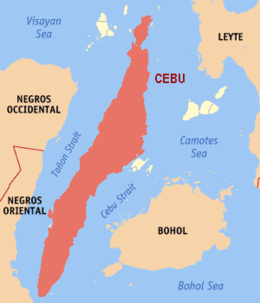 | |
| Geography | |
| Location | Visayas |
| Archipelago | Philippines |
| Adjacent bodies of water | |
| Area | 4,467.5 km2 (1,724.9 sq mi)[16] |
| Length | 196 km (121.8 mi)[17] |
| Width | 32 km (19.9 mi)[17] |
| Coastline | 513.9 km (319.32 mi)[16] |
| Highest elevation | 1,097 m (3,599 ft)[16] |
| Administration | |
|
Philippines | |
| Region | Central Visayas |
| Province | Cebu |
| Demographics | |
| Demonym | Cebuanos (masculine) / Cebuanas (feminine) |
| Population | 3,979,155 (2015 census)[3] |
| Pop. density | 890 /km2 (2,310 /sq mi) |
| Ethnic groups | Visayans (Cebuanos) |
Cebu is located to the east of Negros, to the west of Leyte and Bohol islands. The province consists of Cebu Island, as well as 167 smaller islands, which include Mactan, Bantayan, Malapascua, Olango and the Camotes Islands. But the highly urbanized cities of Cebu, Lapu-Lapu and Mandaue are independent cities not under provincial supervision, yet are often grouped with the province for geographical and statistical purposes.
The province's land area is 4,944 square kilometres (1,909 sq mi), or when the independent cities are included for geographical purposes, the total area is 5,342 square kilometres (2,063 sq mi).
Cebu's central location, proximity to unusually exotic tourist destination, ready access to a diversity of plant, animal and geological wonders within the island, and remoteness from earthquake and typhoon activity are some of the special attributes of Cebu.
Cebu Island
Cebu Island itself is long and narrow, stretching 196 kilometres (122 mi) from north to south and 32 kilometres (20 mi) across at its widest point.[17] It has narrow coastlines, limestone plateaus and coastal plains. It also has rolling hills and rugged mountain ranges traversing the northern and southern lengths of the island.
Cebu's highest mountains are over 1,000 metres (3,300 ft) high. Flat tracts of land can be found in the city of Bogo and in the towns of San Remigio, Medellin and Daanbantayan at the northern region of the province.[17]
The island's area is 4,468 square kilometres (1,725 sq mi),[16] making it the 9th largest island in the Philippines. It supports over 3.5 million people, of which 2.3 million live in Metro Cebu.
Beaches, coral atolls, islands and rich fishing grounds surround Cebu.
Coal was first discovered in Cebu about 1837. There were 15 localities over the whole island, on both coast; some desultory mining had been carried out Naga near Mount Uling, but most serious operations were at Licos and Camansi west of Compostela and Danao.[18] Active work ceased about 1895 with insurrections, and no production worked for more than ten years. A topographic and geologic survey of Compostela, Danao and Carmen took place in 1906.[19] The Compostela-Danao coalfield contained about six million workable tons. The tramroads, one from Danao to Camansi, one from Compostela to Mount Licos, were undertaken in 1895, together with a wagon road built in 1877, from Cotcot to Dapdap.
Climate
The climate of Cebu is tropical. There are 2 seasons in Cebu − the dry and wet season.[20] It is dry and sunny most of the year with some occasional rains during the months of June to December. The province of Cebu normally gets typhoons once a year or none.
Northern Cebu gets more rainfall and typhoons than southern Cebu because it has a different climate. Typhoon Yolanda hit Northern Cebu in 2013 killing 73 people and injuring 348 others. Though most typhoons hit only the northern part of Cebu, the urban areas in central Cebu are sometimes hit, such as when Typhoon Ruping, one of the worst to hit Cebu, lashed the central Cebu area in 1990.
Cebu's temperatures can reach a high of 36 °C (97 °F) from March to May, and as low as 18 °C (64 °F) in the mountains during the wet season. The average temperature is around 24 to 34 °C (75 to 93 °F), and does not fluctuate much except during the month of May, which is the hottest month. Cebu averages 70–80% humidity.[21]
Flora
Cebu has little remaining forest cover. The remaining forest patches in Cebu are composed primarily of the following tree species.[22]
- Mount Lantoy: Carallia brachiata and introduced species Tectona grandis, Swietenia macrophylla, Gmelina arborea, and Casuarina equisetifolia
- Palinipinon Mountains: Carallia brachiata and introduced species Swietenia macrophylla
- Nug-as forest: Ficus spp., Artocarpus blancoi, Macarang grandifolia, and Cinnamomum cebuense
- Mount Lanaya: Carallia brachiata
- Mount Tabunan: Trevesia burckii, Voacanga globosa, Schefflera actinophylla, Pouteria villamilii, and Palaquium luzoniense
Fauna
Endemic species in Cebu include the Cebu Flowerpecker (Diceaum quadricolor), Cebu Slender Skink (Brachymeles cebuensis), Cebu Cinnamon tree (Cinnamomum cebuense), and Black Shama (Copsychus cebuensis).
Administrative divisions

Cebu is subdivided into 6 component cities (Bogo, Carcar, Danao, Naga, Talisay, and Toledo) and 44 municipalities. The cities of Cebu, Lapu-Lapu and Mandaue are often grouped with the province for geographical and statistical purposes, but are independent cities that are not under provincial supervision.
| PSGC | City or Municipality | Population | ±% p.a. | Area[2] | PD 2015 | Electorate | Dist | Climate | ||||||||
|---|---|---|---|---|---|---|---|---|---|---|---|---|---|---|---|---|
| 2015[3] | 2010[23] | km2 | sq mi | /km2 | /sq mi | C | K | |||||||||
| 072201000 | 0.5% | 15,160 | 13,556 | 2.15% | 35.20 | 13.59 | 430 | 1,100 | 10,102 | 9,579 | 7th | III | Af | |||
| 072202000 | 0.6% | 16,979 | 14,757 | 2.71% | 61.63 | 23.80 | 280 | 710 | 11,333 | 9,160 | 2nd | III | Af | |||
| 072203000 | 0.8% | 23,300 | 22,072 | 1.04% | 89.49 | 34.55 | 260 | 670 | 15,431 | 14,966 | 7th | III | Af | |||
| 072204000 | 1.1% | 32,100 | 27,650 | 2.88% | 61.92 | 23.91 | 520 | 1,300 | 20,124 | 18,327 | 3rd | III | Af | |||
| 072205000 | 2.5% | 72,366 | 69,503 | 0.77% | 191.50 | 73.94 | 380 | 980 | 45,139 | 42,438 | 2nd | III | Af | |||
| 072206000 | 1.6% | 47,857 | 44,732 | 1.29% | 190.45 | 73.53 | 250 | 650 | 31,631 | 27,995 | 3rd | III | Am | |||
| 072207000 | 1.3% | 37,912 | 37,699 | 0.11% | 110.07 | 42.50 | 340 | 890 | 23,588 | 22,952 | 7th | III | Af | |||
| 072208000 | 3.0% | 87,177 | 71,237 | 3.92% | 333.56 | 128.79 | 260 | 680 | 47,548 | 40,262 | 3rd | III | Am | |||
| 072209000 | 2.7% | 79,084 | 74,785 | 1.07% | 81.68 | 31.54 | 970 | 2,500 | 39,721 | 44,854 | 4th | IV | Am | |||
| 072210000 | 2.5% | 73,862 | 65,524 | 2.31% | 122.21 | 47.19 | 600 | 1,600 | 42,831 | 46,045 | 3rd | III | Af | |||
| 072211000 | 2.7% | 78,120 | 69,911 | 2.14% | 103.52 | 39.97 | 750 | 2,000 | 48,290 | 45,468 | 4th | IV | Am | |||
| 072212000 | 0.6% | 16,344 | 14,877 | 1.81% | 117.00 | 45.17 | 140 | 360 | 10,216 | 10,252 | 2nd | III | Af | |||
| 072213000 | 1.2% | 35,526 | 32,278 | 1.84% | 120.94 | 46.69 | 290 | 760 | 22,182 | 20,848 | 5th | IV | Am | |||
| 072214000 | 4.1% | 119,664 | 100,632 | 3.35% | 116.78 | 45.09 | 1,000 | 2,700 | 63,285 | 58,088 | 1st | III | Af | |||
| 072215000 | 1.7% | 51,325 | 41,279 | 4.23% | 84.78 | 32.73 | 610 | 1,600 | 32,126 | 31,095 | 5th | III | Am | |||
| 072216000 | 1.0% | 30,471 | 27,330 | 2.09% | 109.64 | 42.33 | 280 | 720 | 17,150 | 17,703 | 5th | IV | Am | |||
| 072217000 | 31.4% | 922,611 | 866,171 | 1.21% | 315.00 | 121.62 | 2,900 | 7,600 | 630,003 | 547,681 | 2 LD | III | Am | |||
| 072218000 | 1.6% | 47,898 | 39,167 | 3.91% | 53.90 | 20.81 | 890 | 2,300 | 29,306 | 26,760 | 5th | III | Am | |||
| 072219000 | 4.5% | 131,528 | 106,649 | 4.07% | 37.03 | 14.30 | 3,600 | 9,200 | 73,893 | 62,960 | 6th | III | Am | |||
| 072220000 | 2.0% | 59,712 | 50,353 | 3.30% | 17.15 | 6.62 | 3,500 | 9,000 | 34,273 | 29,694 | 6th | III | Am | |||
| 072221000 | 2.9% | 84,430 | 74,897 | 2.31% | 92.27 | 35.63 | 920 | 2,400 | 48,601 | 43,575 | 4th | IV | Am | |||
| 072222000 | 2.3% | 67,497 | 63,239 | 1.25% | 154.96 | 59.83 | 440 | 1,100 | 35,658 | 34,692 | 2nd | III | Af | |||
| 072223000 | 4.6% | 136,471 | 119,252 | 2.60% | 107.30 | 41.43 | 1,300 | 3,300 | 86,085 | 85,279 | 5th | III | Am | |||
| 072224000 | 1.7% | 51,210 | 46,754 | 1.75% | 85.53 | 33.02 | 600 | 1,600 | 32,494 | 31,980 | 7th | III | Af | |||
| 072225000 | 0.5% | 15,919 | 15,327 | 0.72% | 70.10 | 27.07 | 230 | 590 | 11,143 | 10,168 | 7th | III | Af | |||
| 072226000 | 13.9% | 408,112 | 350,467 | 2.94% | 58.10 | 22.43 | 7,000 | 18,000 | 188,815 | 173,341 | Lone | III | Am | |||
| 072227000 | 4.0% | 118,753 | 100,500 | 3.23% | 45.92 | 17.73 | 2,600 | 6,700 | 62,429 | 53,585 | 5th | III | Am | |||
| 072228000 | 1.2% | 36,429 | 34,905 | 0.82% | 23.95 | 9.25 | 1,500 | 3,900 | 23,134 | 23,583 | 4th | IV | Am | |||
| 072229000 | 0.7% | 19,373 | 18,426 | 0.96% | 69.27 | 26.75 | 280 | 720 | 12,814 | 11,319 | 7th | III | Af | |||
| 072230000 | 12.3% | 362,654 | 331,320 | 1.74% | 34.87 | 13.46 | 10,000 | 27,000 | 189,712 | 187,318 | 6th | III | Am | |||
| 072231000 | 1.9% | 55,332 | 50,047 | 1.93% | 73.19 | 28.26 | 760 | 2,000 | 32,756 | 29,987 | 4th | IV | Am | |||
| 072232000 | 4.5% | 132,135 | 113,178 | 2.99% | 65.60 | 25.33 | 2,000 | 5,200 | 55,652 | 50,819 | 1st | III | Af | |||
| 072233000 | 1.1% | 31,130 | 27,676 | 2.26% | 124.86 | 48.21 | 250 | 650 | 19,821 | 18,663 | 7th | III | Af | |||
| 072234000 | 3.9% | 115,750 | 101,571 | 2.52% | 101.97 | 39.37 | 1,100 | 2,900 | 63,755 | 63,755 | 1st | III | Af | |||
| 072235000 | 0.9% | 27,893 | 26,116 | 1.26% | 134.75 | 52.03 | 210 | 540 | 18,886 | 18,283 | 2nd | III | Af | |||
| 072236000 | 0.4% | 11,308 | 11,564 | −0.43% | 32.42 | 12.52 | 350 | 900 | 8,613 | 8,849 | 5th | IV | Af | |||
| 072237000 | 2.2% | 65,955 | 57,997 | 2.48% | 109.16 | 42.15 | 600 | 1,600 | 40,737 | 35,690 | 3rd | III | Af | |||
| 072238000 | 0.9% | 25,212 | 23,498 | 1.35% | 63.59 | 24.55 | 400 | 1,000 | 13,790 | 14,629 | 5th | IV | Af | |||
| 072239000 | 0.7% | 20,360 | 18,582 | 1.76% | 57.10 | 22.05 | 360 | 920 | 14,397 | 13,551 | 7th | III | Af | |||
| 072240000 | 0.7% | 20,884 | 18,613 | 2.22% | 45.16 | 17.44 | 460 | 1,200 | 12,577 | 12,165 | 2nd | III | Af | |||
| 072241000 | 2.3% | 66,280 | 60,970 | 1.60% | 69.39 | 26.79 | 960 | 2,500 | 43,398 | 37,770 | 1st | III | Af | |||
| 072242000 | 1.9% | 55,180 | 47,357 | 2.95% | 106.93 | 41.29 | 520 | 1,300 | 27,484 | 26,624 | 5th | IV | Af | |||
| 072243000 | 2.0% | 57,557 | 51,394 | 2.18% | 95.27 | 36.78 | 600 | 1,600 | 37,122 | 34,079 | 4th | IV | Am | |||
| 072244000 | 1.0% | 28,603 | 27,270 | 0.91% | 28.05 | 10.83 | 1,000 | 2,600 | 16,929 | 14,933 | 4th | IV | Am | |||
| 072245000 | 0.6% | 17,857 | 16,105 | 1.99% | 35.67 | 13.77 | 500 | 1,300 | 11,577 | 10,924 | 2nd | III | Af | |||
| 072246000 | 1.6% | 48,186 | 43,641 | 1.90% | 133.45 | 51.53 | 360 | 940 | 27,317 | 26,662 | 1st | III | Af | |||
| 072247000 | 1.2% | 35,108 | 30,626 | 2.63% | 119.23 | 46.03 | 290 | 760 | 21,586 | 20,503 | 5th | IV | Am | |||
| 072248000 | 1.3% | 39,013 | 33,024 | 3.22% | 101.35 | 39.13 | 380 | 1,000 | 24,746 | 23,718 | 4th | IV | Am | |||
| 072249000 | 0.9% | 25,630 | 22,292 | 2.69% | 141.13 | 54.49 | 180 | 470 | 17,880 | 16,863 | 4th | IV | Am | |||
| 072250000 | 7.7% | 227,645 | 200,772 | 2.42% | 39.87 | 15.39 | 5,700 | 15,000 | 120,240 | 111,696 | 1st | III | Am | |||
| 072251000 | 5.8% | 170,335 | 157,078 | 1.55% | 216.28 | 83.51 | 790 | 2,000 | 103,658 | 98,557 | 3rd | III | Af | |||
| 072252000 | 2.2% | 63,866 | 58,914 | 1.55% | 224.50 | 86.68 | 280 | 740 | 42,547 | 39,076 | 3rd | III | Aw | |||
| 072253000 | 0.4% | 11,296 | 9,859 | 2.62% | 33.02 | 12.75 | 340 | 890 | 7,763 | 7,866 | 5th | IV | Af | |||
| TOTAL | 4,632,359 | 4,167,320 | 2.03% | 4454.00 | 1,719.7 | 1,000 | 2,600 | 2,696,819 | 2,517,629 | |||||||
| † |
Provincial capital Highly Urbanized City |
|
Municipality Component city | |||||||||||||
Demographics
| Population census of Cebu (province) | ||||||||||||||||||||||||||||||||||
|---|---|---|---|---|---|---|---|---|---|---|---|---|---|---|---|---|---|---|---|---|---|---|---|---|---|---|---|---|---|---|---|---|---|---|
|
| |||||||||||||||||||||||||||||||||
| Excludes independent cities Source: Philippine Statistics Authority[3] [23] [24] | ||||||||||||||||||||||||||||||||||
The population of Cebu Province in 2015 was 2,938,982 people, with a density of 590 inhabitants per square kilometre or 1,500 inhabitants per square mile.[3] When the independent cities – Cebu City (922,611[25]), Lapu-Lapu (408,112[25]), and Mandaue (362,654[25]) – are included for geographical purposes, the total population is 4,632,359 people, with a population density of 870 inhabitants per square kilometre (2,300/sq mi).
The population of the Central Visayas is predominantly young with about 37 percent of its population below 10 years old. This is very evident in the very broad base of the population pyramid in the region which has prevailed since 1970 but at a declining rate. A decline of 2.29 percentage points in the proportion of household population below 15 years old was noted from 1980 to 1995. Conversely, an increase of 3.06 percentage points was observed in the 15–64 age group during the same period. The population of the region is evenly distributed between male and female. However, the male population in the region has been increasing at a faster rate compared to the female population.[26]
In 2010, the median age of the population of the province was 23.0 years, which means that half of the population was younger than 23.0 years.[2] This is higher than the median age of 20.8 years that was recorded in 2000.
Languages
The Cebuano language is spoken in Cebu, as well as in most areas of the Visayas, including Bohol (where it is spoken as Boholano), Siquijor, western Leyte, Biliran and Negros Island Region (especially in Negros Oriental), as well as most provinces of Mindanao.
In the Camotes Islands, especially in Poro, people there speak their own Visayan language called Porohanon, which has some Masbateño and Waray-Waray influences. Some of the residents in Bantayan islands also speak Bantayanon, a Visayan language related to Hiligaynon.
Religion
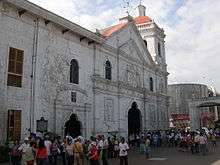
The majority of its population are Roman Catholic[29] followed by roughly 95% of Cebuanos. There are also some followers of Islam, Buddhism and Hinduism.
Cebu is the capital of the Catholic faith[30] by virtue of being the first Christian city,[31] the first capital of the Spanish East Indies, and the birthplace of Christianity and the Philippine Church. Pope John Paul II, in his Homily for Families in Cebu (19 February 1981), called the island as the birthplace of Christianity in the Philippines.[32]
The image of Santo Niño de Cebú (Holy Child of Cebu), the oldest Christian image in the Philippines, is enshrined and venerated at the Basilica of Santo Niño. According to Philippine historical documents, the statue of the Santo Niño (Holy Child) was given to the wife of the Rajah of Cebu by the Portuguese explorer Ferdinand Magellan. The friendship is depicted in Cebu's cultural event, the Sinulog where street parades and loud drum beats preceded by a Christian Mass is celebrated every third Sunday of January. Cebu has a Roman Catholic Archdiocese and has several major churches, including the Basilica Minor del Santo Niño de Cebu, Cebu Metropolitan Cathedral, Santo Rosario Parish Church, San José–Recoletos Church, Sacred Heart Church, Archdiocesan Shrine of Our Lady of Lourdes, National Shrine of Our Lady of the Rule, National Shrine of Saint Joseph, Archdiocesan Shrine of Our Lady of Guadalupe of Cebu, San Nicolas de Tolentino Church and other Christian churches, as well as several other non-Catholic churches, mosques and temples.
Government
| Former governors | |
|---|---|
| Julio Llorente | 1900–1901 |
| Juan Climaco | 1902–1903 |
| Sergio Osmeña | 1904–1905 |
| Dionisio Jakosalem | 1907–1912 |
| Manuel Roa | 1912–1922 |
| Arsenio Climaco | 1923–1930 |
| Mariano Jesus Cuenco | 1931–1933 |
| Sotero Cabahug | 1934–1937 |
| Buenaventura Rodriguez | 1937–1940 |
| Hilario Abellana | 1941–1943 |
| Jose Delgado | 1943–1944 |
| Jose Leyson | 1944–1945; |
| Fructuoso Cabahug | 1945–1946 |
| Manuel Cuenco | 1946–1951 |
| Sergio Osmeña, Jr. | 1952–1955 |
| Jose Briones | 1956–1961 |
| Francisco Remotigue | 1961–1963 |
| Rene Espina | 1964–1969 |
| Osmundo Rama | 1969–1976 1986–1988[lower-roman 1] |
| Eduardo Gullas | 1976[lower-roman 1]–1986 |
| Lito Osmeña | 1988–1992 |
| Vicente de la Serna | 1992–1995 |
| Pablo Garcia | 1995–2004 |
| Gwendolyn Garcia | 2004–2013 |
| Hilario Davide III | 2013–present |
- Governor: Hilario P. Davide III (Liberal Party)
- Vice Governor: Agnes A. Magpale (Liberal Party)
|
|
|
| |||||||||||||||||||||||||||||||||||||||||||||||||||||||||||||||||||||||||
|
|
| ||||||||||||||||||||||||||||||||||||||||||||||||||||||||||||||||||||||||||
|
|
|
|
| |||||||||||||||||||||||||||||||||||||||||||||||||||||||||||||||||||||||||
|
|
|
| ||||||||||||||||||||||||||||||||||||||||||||||||||||||||||||||||||||||||||
|
|
|
| ||||||||||||||||||||||||||||||||||||||||||||||||||||||||||||||||||||||||||
Economy
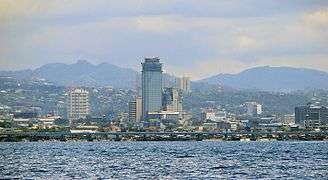
"Ceboom", a portmanteau of Cebu and Boom, has been used to describe the province's economic development. With many beautiful islands, white sand beaches, luxury hotel and resorts, diving locations and heritage sites, high domestic and foreign tourist arrivals have fueled the tourism industry of Cebu. Cebu consistently gets a big share of tourist arrivals in the Philippines, and has become the tourist gateway to Central and Southern Philippines due to its central geographic location, accessibility and natural resources. The province also hosts various national and international conferences every year.
About 80% of domestic and international shipping operators and shipbuilders in the Philippines are located in Cebu. Shipbuilding companies in Cebu have manufactured bulk carriers of up to 70,000 tonnes deadweight (DWT), and double-hulled fastcraft as well. Cebu's industry helps make the Philippines the 5th largest shipbuilding country in the world.[33]
Cebu's extensive port facilities and its proximity to intra-Asian shipping and air routes are major factors which led multinational companies to establish offices or factories on the main island, as well as in the island of Mactan, where they are clustered in special economic zones known as the Mactan Economic Processing Zone 1 (MEPZ-1) and the Mactan Economic Processing Zone 2 (MEPZ-2). Due to its burgeoning furniture-making industry, Cebu has been named as the furniture capital of the Philippines. Cebu's other exports include: fashion accessories, guitars, coconut, coconut oil,[34] dried mangoes, carrageenan, gifts, toys, watches, cameras, electronic components and housewares.
With a revenue growth rate of 18.8 percent in 2012, the real estate industry is the fastest-growing sector in Cebu. With the strong economic indicators and high investors' confidence level, more condominium projects and hypermarkets are being developed in the locality. An additional 100 commercial and residential buildings would be completed by 2015 and another 170 to 200 buildings are expected to be finished by 2017. 64 new hypermarkets will be developed in Cebu.[35]
In 2013, Cebu ranked 8th worldwide in the "Top 100 BPO Destinations Report" by global advisory firm, Tholons.[36][37] The Cebu Chamber of Commerce and Industry, an organization of Cebu's businesses, is promoting the city's growth and economy on information and communications technology, with the aim of making Cebu the premier ICT, software and e-services investment destination in southeast Asia. Data gathered by the National Economic Development Authority (Neda) 7 showed that of the 98 BPO and IT companies operating in Cebu, 32 offer voice operations while 66 companies offer non-voice operations. Of the 95,000 employed by the industry, more than half or 50,000 are in the non-voice sector. In 2012, the growth in IT-BPO revenues in Cebu grew 26.9 percent at $484 million, while nationally, the industry grew 18.2 percent at $13 billion.[38][39]
Cebu's economy is also driven by the mining and quarrying areas in Toledo, Naga, Alcoy, and Danao.
Cebu even boasts being a subsidiary of one of the leading ice rink manufacturers in the world. These rinks are engineered and fabricated in Cebu by Ice Rink Supply and shipped worldwide [40] and Freeze Point Rink Services.[41]
Infrastructure

The Mactan-Cebu International Airport (MCIA) in Mactan Island serves as the main gateway to domestic and international routes to or from Cebu City and other islands in the Visayas region. In the last 15 years, MCIA's passenger traffic has grown at an annual average of 21% for international passenger traffic. The airport is the second busiest airport in the Philippines in passenger and cargo traffic. The plan for a new terminal expansion of the airport is underway and estimated to cost $240 million under a public-private partnership program of the Philippine government. The new terminal will host international flights while the old terminal will host domestic flights.[42]
In addition, MCIAA (MCIA Authority) General Manager Nigel Paul Villarete (who was the project of BRT earlier) also proposed to establish a Bus Rapid Transit (BRT) line to transport airport passengers to and from MCIAA and different parts of Cebu. This will be integrated into the proposed Bus Rapid Transit (BRT) System being planned in Metro Cebu.[43]
The Cebu International Port is the largest shipping hub in the Visayas region.
Cebu Pacific Air is an airline owned by Cebu-based Gokongwei family. On 28 May 2008, Cebu Pacific was named as the world's number one airline in terms of growth. The airline carried a total of almost 5.5 million passengers in 2007, up 57.4% from 2006.[44] On January 6, 2011, Cebu Pacific flew its 50 millionth passenger (from Manila to Beijing). The airline reached the 100 million passengers in 2015.[45] Cebu Pacific commenced international long-haul flights to Middle East and Australia, flight to Guam starting Q1 2016.
Notable business districts are the Cebu Business Park and the Cebu IT Park. This area hosts industries related to the information technology industry such as software development, telecommunications, engineering research and development centers, and business process outsourcing. In 2013, Ayala Corporation's affiliate, Ayala Land Inc., announced that it is looking at introducing another business park development within the Cebu City area to optimize the high performance of real estate investments in Cebu.[46] Cebu Holdings Inc. and the Ayala Corporation created Cebu Park District, an integrated, master-planned, mixed-use economic zones of the Cebu Business Park and Cebu I.T. Park. The district plays a vital role in the city's economy. It is where many of the region's corporate headquarters are located. Both parks and the adjoining areas enjoy a critical mass of local and international locators in the spheres of business, banking, finance, IT and tourism services, among others.
The city's 300-hectare (740-acre; 3.0 km2; 3,000,000 m2) reclamation forms South Road Properties – a mixed-use development south of the city which features entertainment, leisure, residential and business-processing industries.[47] Is the site of SM Seaside City Cebu, the eighth largest mall in the world (and 3rd largest shopping mall in the Philippines), Filinvest's Citta di Mare[48] and Il Corso,[49] and the University of the Philippines – Cebu campus.[50]
In Mactan Island, Megaworld Corporation's Mactan Oceantown is a 25–hectare business park near Shangri-La's Mactan Resort and Spa. The project will be home to high-tech offices, a retail center, residential towers and villages, leisure facilities with a beach resort frontage.[51]
Mactan Island is linked to mainland Cebu via Mactan-Mandaue Bridge and Marcelo Fernan Bridge.
Media
Cebu is home to a local television station, Cebu Catholic Television Network (CCTN)[lower-alpha 1]).
Despite having their local stations, Cebuanos prefer to watch the Philippine four dominant television networks namely: ABS-CBN, The 5 Network, CNN Philippines and GMA Network.
While national newspapers have presence in the island, Cebu has English-language local newspapers – The Freeman (under the Star Group), Sun.Star Cebu and Cebu Daily News (under the Inquirer Group): and Cebuano-language newspapers – SunStar SuperBalita owned by SunStar, and Banat News owned by The Freeman. Each of the local newspapers sell cheaper than their national counterparts.
Education
The Philippine elementary school begins from Grades 1 to 6. The high school program takes six years, from Grades 7 through to 12, taken after graduating from elementary school. Cebu is the main educational institute in the central region of the country. It has several large universities each with a number of college branches throughout Cebu City and more than a dozen other schools and universities specializing in various courses such as Medicine, Engineering, Nautical courses, Nursing, Law, Commerce, Education, Computer and IT and other professions.
The most prominent of these universities are:
- University of San Carlos
- University of the Philippines Cebu
- University of San Jose–Recoletos
- Cebu Institute of Technology-University
- Cebu Normal University
- Cebu Technological University
- University of Cebu
- University of Southern Philippines Foundation
- Southwestern University
- University of the Visayas
The Cebu Doctors' University (formerly Cebu Doctors' College), a medical school located in the Cebu Boardwalk in nearby Mandaue, was elevated to university status in November 2004. Another notable medical school is the Cebu Institute of Medicine in affiliation with Velez College. The Cebu Institute of Technology – University (formerly Cebu Institute of Technology) located in N. Bacalso Ave. and the Cebu Technological University (formerly Cebu State College of Science and Technology) which is located in M.J. Cuenco Avenue cor. R. Palma Street, Cebu City is the newest universities. CIT-U and CTU were elevated to university status in the year 2010. The Cebu's first film school, The International Academy of Film and Television was established on Mactan Island in 2004. The Asian College of Technology, is also located in Metro Cebu.
Cebu is home to one fully accredited international school, Cebu International School, a K–12 school established in 1924.
A Punjabi teaching school opened in Cebu.
Tourism
Attractions
Cebu City is a significant cultural centre in the Philippines. The imprint of Spanish and Roman Catholic culture is evident. There are also many historically important sights all over the province.
Gallery
 Bagacay Point Lighthouse, Liloan
Bagacay Point Lighthouse, Liloan Lapu Lapu shrine at Mactan
Lapu Lapu shrine at Mactan- Bounty Beach, Malapascua Island, Daanbantayan

 Island in the Sky mountain resort, Balamban
Island in the Sky mountain resort, Balamban- Bantayan from far end of quay
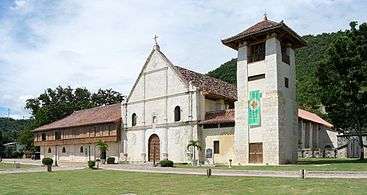 Boljoon Church Boljoon
Boljoon Church Boljoon- Carcar Dispensary, Carcar
 San Vicente Ferrer Church, Bogo
San Vicente Ferrer Church, Bogo
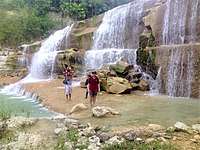 Waterfalls in Cebu
Waterfalls in Cebu
Sinulog
.jpg)
Sinulog Festival is the largest fiesta (festival) in the Philippines. Held every third Sunday of January, it commemorates the Child Jesus, the Lord and Protector of Cebu. The Sinulog is a dance ritual of pre-Hispanic indigenous origin. The dancer moves two steps forward and one step backward to the rhythmic sound of drums. This movement resembles the current (sulog) of what was then known Cebu's Pahina River. Thus the name Sinulog.
The Sinulog Festival celebration lasts for nine days, culminating on the final day with the Sinulog Grand Parade. The day before the parade, the Fluvial Procession is held at dawn with a statue of the Santo Niño carried on a pump boat from Mandaue City to Cebu City, decked with hundreds of flowers and candles. The procession ends at the Basilica where a re-enactment of the Catholicizing (that is, the acceptance of Roman Catholicism) of Cebu is performed. In the afternoon, a more solemn procession takes place along the major streets of the city, which last for hours due to large crowd participating in the event.
When the Spaniards arrived in Cebu, the Italian chronicler, Antonio Pigafetta, sailing under convoy with the Magellan expedition, offered a baptismal gift to Hara Amihan, wife of Rajah Humabon. She was later named Juana, the figure of the Santo Niño. The natives also honored the Santo Niño de Cebu in their indigenous Sinulog ritual. The Sinulog ritual was preserved but limited to honoring the Santo Niño. Once the Santo Niño church was built in the 16th century, the Catholic Malay people started performing the Sinulog ritual in front of the church, the devotees offering candles and indigenous dancers shouting "Viva Pit Señor!".
In the 1980s and 2000s, the city authorities of Cebu added the religious feast of Santo Niño de Cebu during the Sinulog Festival to its cultural event. In 2012, Cebu introduced Life Dance, the biggest outdoor dance party in the country outside Metro Manila.
International relations and sisterhood agreements
- Cebu Province hosted two major Information and Communications Technology (ICT) and telecom events, the 12th ASEAN Telecommunications and IT Ministers Meeting (TELMIN) and the 13th ASEAN Telecommunications and IT Senior Officials Meeting (TELSOM) in 2012.
- Cebu Province hosted the international 4th Dance Xchange, a project organized by the National Dance Committee of the National Commission for Culture and the Arts in 2012.
- Cebu Province as member hosted the 11th East Asia Inter-Regional Tourism Forum in 2011[52]
- Cebu Province join as a participating member of Inter–Island Tourism Policy Forum in 2011 (ITOP Forum)[53]
- Cebu Province hosted the 12th ASEAN Summit in 2007.[54]










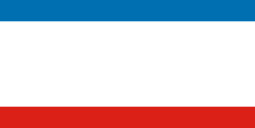




- Existing sisterhood agreements
- Domestic sisterhood agreements
Notes
- ↑ a religious station partly owned and endorsed by the Archdiocese of Cebu
References
- ↑ "What To Know About Cebu, Philippines". The Philippines dot com. Retrieved 21 August 2016.
- 1 2 3 "Province: Cebu". PSGC Interactive. Quezon City, Philippines: Philippine Statistics Authority. Retrieved 8 January 2016.
- 1 2 3 4 5 Census of Population (2015). "Region VII (Central Visayas)". Total Population by Province, City, Municipality and Barangay. PSA. Retrieved 20 June 2016.
- ↑ "2016 National and Local Elections Statistics". Commission on Elections. 2016.
- ↑ Cebu on Merriam-Webster.com
- ↑ "Cebu (province)".
- 1 2 Macachor 2011.
- ↑ "Welcome to Cebu – History". www.sinulog.ph. Archived from the original on July 14, 2008.
- ↑ Montebon 2000, p. 15.
- ↑ Montebon 2000, pp. 89–90.
- ↑ "Philippine History – Spanish Colonization". Archived from the original on 8 January 2011.
- ↑ information.ph 2009a.
- ↑ "Cebu – History". www.cebu.gov.ph.
- ↑ information.ph 2009b.
- ↑ de Viana 2005.
- 1 2 3 4 UNEP 1998.
- 1 2 3 4 Encyclopædia Britannica 2016.
- ↑ Abella y Casariego 1886.
- ↑ Smith 1907.
- ↑ "Weather". Archived from the original on 2013-05-25. Retrieved 26 April 2017.
- ↑ "Guide to Cebu – Weather in Cebu". www.guidetocebu.com.
- ↑ Supsup, Christian & Puna, Nevong & Asis, Augusto & Redoblado, Bernard & Fatima Panaguinit, Maria & Guinto, Faith & Rico, Edmund & Diesmos, Arvin & Brown, Rafe & Mallari, Neil. (2016). Amphibians and Reptiles of Cebu, Philippines: The Poorly Understood Herpetofauna of an Island with Very Little Remaining Natural Habitat. Asian Herpetological Research. 7. 151-179. 10.16373/j.cnki.ahr.150049.
- 1 2 Census of Population and Housing (2010). "Region VII (Central Visayas)". Total Population by Province, City, Municipality and Barangay. NSO. Retrieved 29 June 2016.
- ↑ Censuses of Population (1903–2007). "Region VII (Central Visayas)". Table 1. Population Enumerated in Various Censuses by Province/Highly Urbanized City: 1903 to 2007. NSO.
- 1 2 3 "Press release". psa.gov.ph.
- ↑ "More on demographics". The Commission on Population of the Philippines. Archived from the original on 2011-10-05. Retrieved 27 August 2011.
- ↑ "Table 4. Household Population by Ethnicity and Sex: Cebu, 2000". Archived from the original on 2014-01-20.
- ↑ Basilica del Santo Niño is named by the Vatican as "mother and head of all churches in the Philippines" (mater et caput... omnium ecclesiarum Insularum Philippinarum). See Ut clarificetur
- ↑ "Cebu – Paradise: Culture and Lifestyle". www.cebu.gov.ph.
- ↑ Bautista 2006.
- ↑ Blair, Robertson & Vol 2, p. 121.
- ↑ "19 February 1981: Mass for families, Cebu City, Philippines - John Paul II". Retrieved 26 April 2017.
- ↑ Manila Bulletin 2015.
- ↑ Wernstedt 1957, p. 47.
- ↑ "Real estate sector fastest growing industry in Cebu". SunStar Cebu. Retrieved 25 June 2013.
- ↑ "Cebu rises to 8th best site for BPOs". SunStar Cebu. Retrieved 18 March 2013.
- ↑ "Metro Manila, Cebu among top global BPO destinations". Yahoo! Philippines. Retrieved 18 March 2013.
- ↑ "Non-voice overtakes voice operation in Cebu". SunStar Cebu. Retrieved 25 June 2013.
- ↑ "Cebu Park District, Cebu Holdings". Archived from the original on 2013-01-01. Retrieved 26 April 2017.
- ↑ "Ice Rink Supply, Banilad, Cebu". Retrieved 26 April 2017.
- ↑ "Freeze Point - Ice Rink Supplier, Mandaue, Cebu". Retrieved 26 April 2017.
- ↑ "Philippine PPPs queue up investors". InvestVine.com. 3 April 2013.
- ↑ Cebu Daily News 2011.
- ↑ "Cebu Pacific is world's No. 1 in growth". Archived from the original on 2015-10-16. Retrieved 2015-08-26.
- ↑ "Cebu Pacific Reaches 50 Million Passengers Mark". Airline-philippines.com. Archived from the original on 2012-03-16. Retrieved 26 June 2013.
- ↑ Sun.Star (22 April 2013). "Cebu Holdings Inc. planning new business district". Retrieved 26 April 2017.
- ↑ "About South Road Properties". City Government of Cebu. Archived from the original on 2013-03-01. Retrieved 20 February 2013.
- ↑ "City di Mare". Retrieved 26 April 2017.
- ↑ Libotero, Sinjin Pineda (7 June 2013). "Filinvest's Il Corso mall rises at SRP-Cebu".
- ↑ "University of the Philippines Cebu". University of the Philippines Cebu.
- ↑ Mactan Oceantown – Mactan, Cebu City, http://www.megaworldcorp.com/Projects/Office.aspx
- ↑ "11th East-Asia Tourism Forum (EATOF) Integrated Academic, Tourism and Business Forum Business Matching | Cebu Chamber of Commerce and Industry". Cebuchamber.org. 12 September 2011. Retrieved 16 April 2013.
- ↑ Manila Bulletin 2011.
- ↑ "ASEAN Leaders Sign Five Agreements at the 12th ASEAN Summit, Cebu, the Philippines, 13 January 2007" (Press release). ASEAN Secretariat. 13 January 2007. Archived from the original on 2007-01-28. Retrieved 28 January 2007.
12th ASEAN Summit, five.
Bibliography
- Abellana, Jovito (1952). Aginid, Bayok sa Atong Tawarik (in Cebuano).
- Abella y Casariego, Enrique (1886). Rápida descripcion física, geológica y minera de la Isla de Cebú (in Spanish). Madrid: Tello.
- Bautista, Julius (2006). "The Rebellion and the Icon: Holy Revolutions in the Philippines". Asian Journal of Social Science. 34 (2): 291–310. doi:10.1163/156853106777371166.
- Blair, Emma Helen & Robertson, James Alexander, eds. (1903). The Philippine Islands, 1493–1803. Volume 2 of 55 (1521–1569). Historical introduction and additional notes by Edward Gaylord Bourne. Cleveland, Ohio: Arthur H. Clark Company.
Explorations by early navigators, descriptions of the islands and their peoples, their history and records of the catholic missions, as related in contemporaneous books and manuscripts, showing the political, economic, commercial and religious conditions of those islands from their earliest relations with European nations to the beginning of the nineteenth century.
- Cebu Daily News (2011). "Revamp, BRT setup eyed for Mactan airport".
- Encyclopædia Britannica (2016). "Cebu". www.britannica.com. Retrieved 10 February 2016.
- information.ph (2009a). "Part 2: The first Spanish expedition of 1521". Philippine History. Archived from the original on 31 January 2009.
- information.ph (2009b). "Part 3: The Spanish colonization". Philippine History. Archived from the original on 31 January 2009.
- Macachor, Celestino C. (2011). "Searching for Kali in the Indigenous Chronicles of Jovito Abellana". Rapid Journal. 10 (2). Archived from the original on 2012-07-03.
- Manila Bulletin, Mars W. Mosqueda (4 October 2011). "Cebu joins elite ITOP Forum". Archived from the original on 23 October 2011. Retrieved 11 February 2016.
- Manila Bulletin, Jonas Reyes (13 January 2015). "PH ranks 5th among world's shipbuilders". Archived from the original on 12 October 2015. Retrieved 11 February 2016.
- Montebon, Marivir R. (2000). A Tribute to Two Centenarians. Retracing our Roots, A Journey into Cebu's Pre-colonial and Colonial Past. Minglanilla, Cebu: ED Villaver Publishing. pp. 89–90.
- Segura, Manuel F. (1992). The Koga papers : stories of WW II. Cebu City: MF Segura Publications.
- Smith, Warren Du Pré (1907). Freer, Paul C.; Strong, Richard D.; Merrill, E. D., eds. "The geology of the Compostela-Danao coal field". Philippine Journal of Science. 2A (6): 377 ff.
- Tribune of India (3 December 2014). "Seechewal inaugurates Punjabi school in Philippines". Jalandhar. Archived from the original on 8 December 2014.
- UNEP, Arthur Lyon Dahl (1998). "Islands of Philippines: Cebu". Island Directory. United Nations Environment Programme. Retrieved 11 February 2016.
- de Viana, Augusto V. (2005). "The capture of the Koga Papers and its effect on the plan to retake the Philippines in 1944" (PDF). Micronesian: Journal of the Humanities and Social Sciences. National Historical Institute in the Philippines. 4 (2).
- Wernstedt, Frederick L. (1957). The role and importance of Philippine interisland shipping and trade. Southeast Asia Program, Dept. of Far Eastern Studies, Cornell University.
External links
| Wikimedia Commons has media related to Cebu. |
| Wikivoyage has a travel guide for Cebu Province. |

- Official Website of the Provincial Government of Cebu
- The Official Government Portal of the Republic of the Philippines – Cebu

.svg.png)
